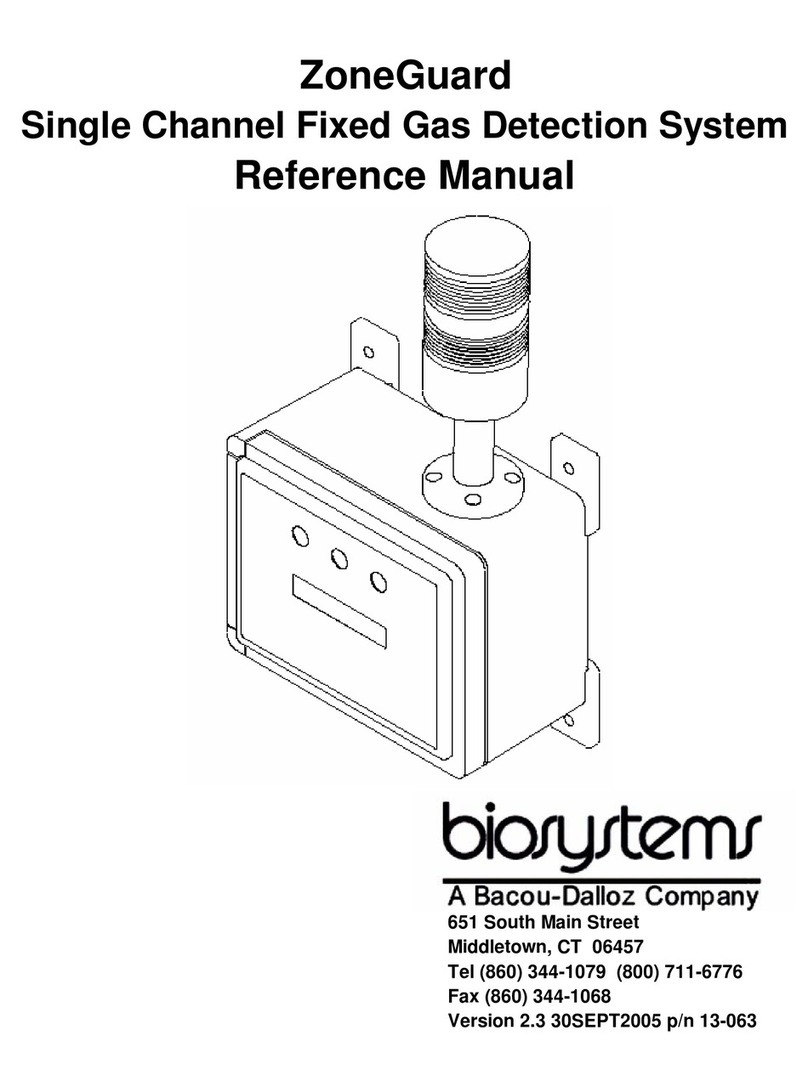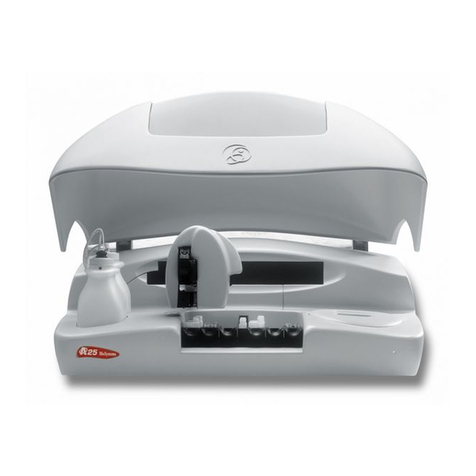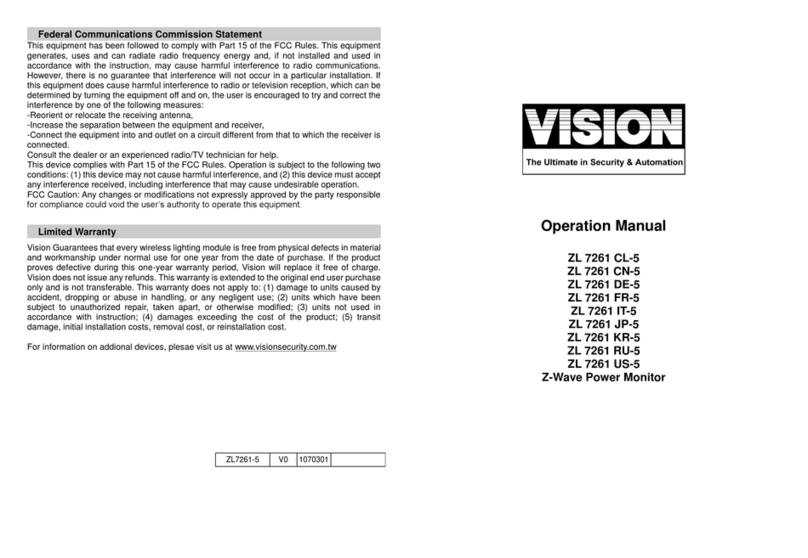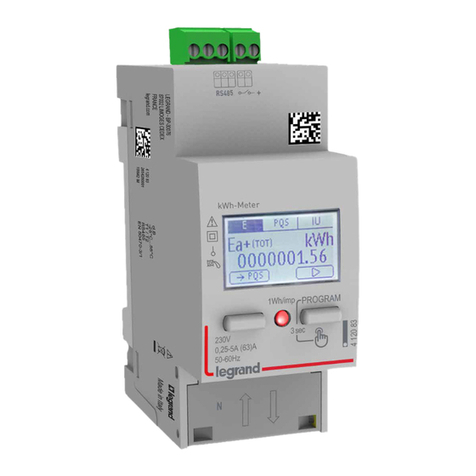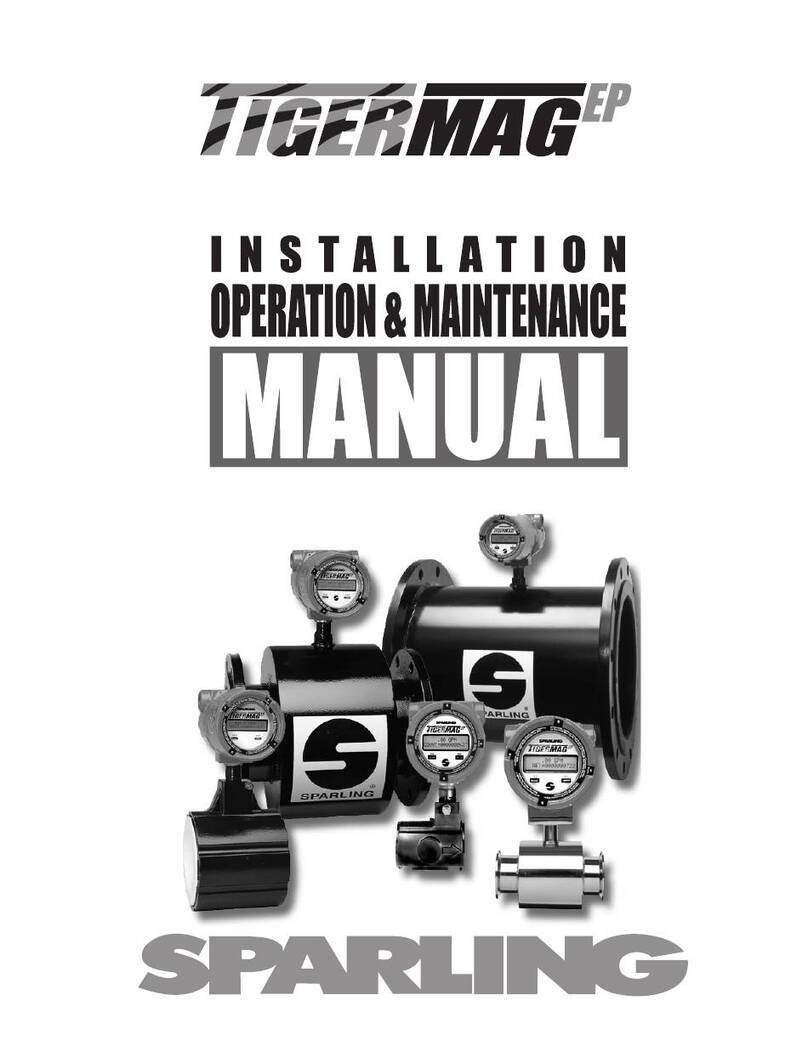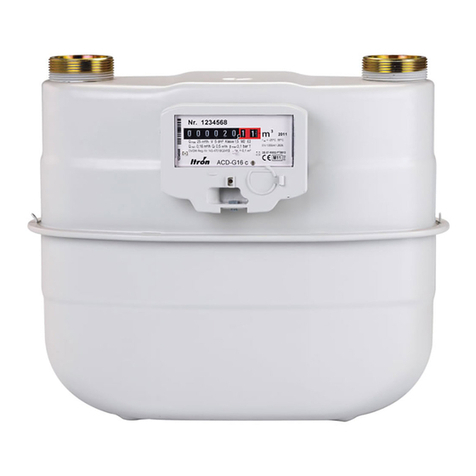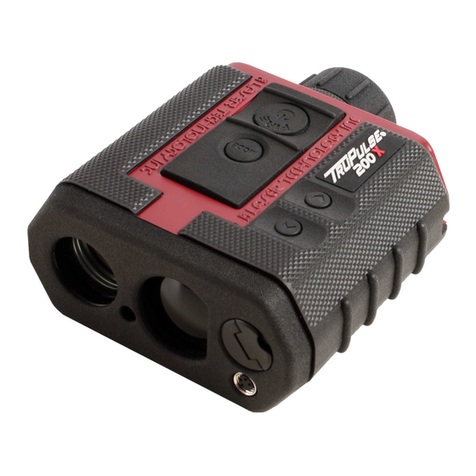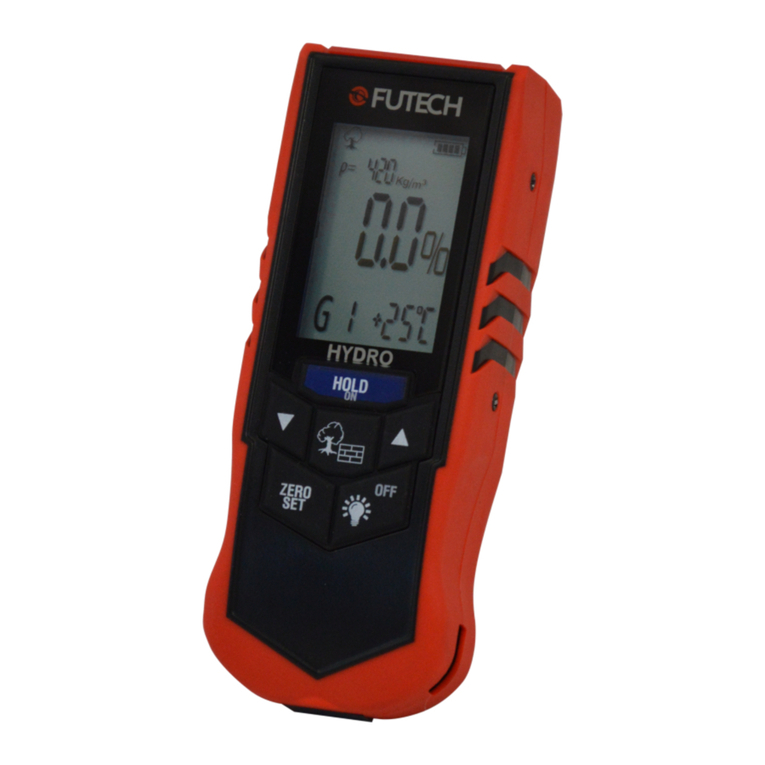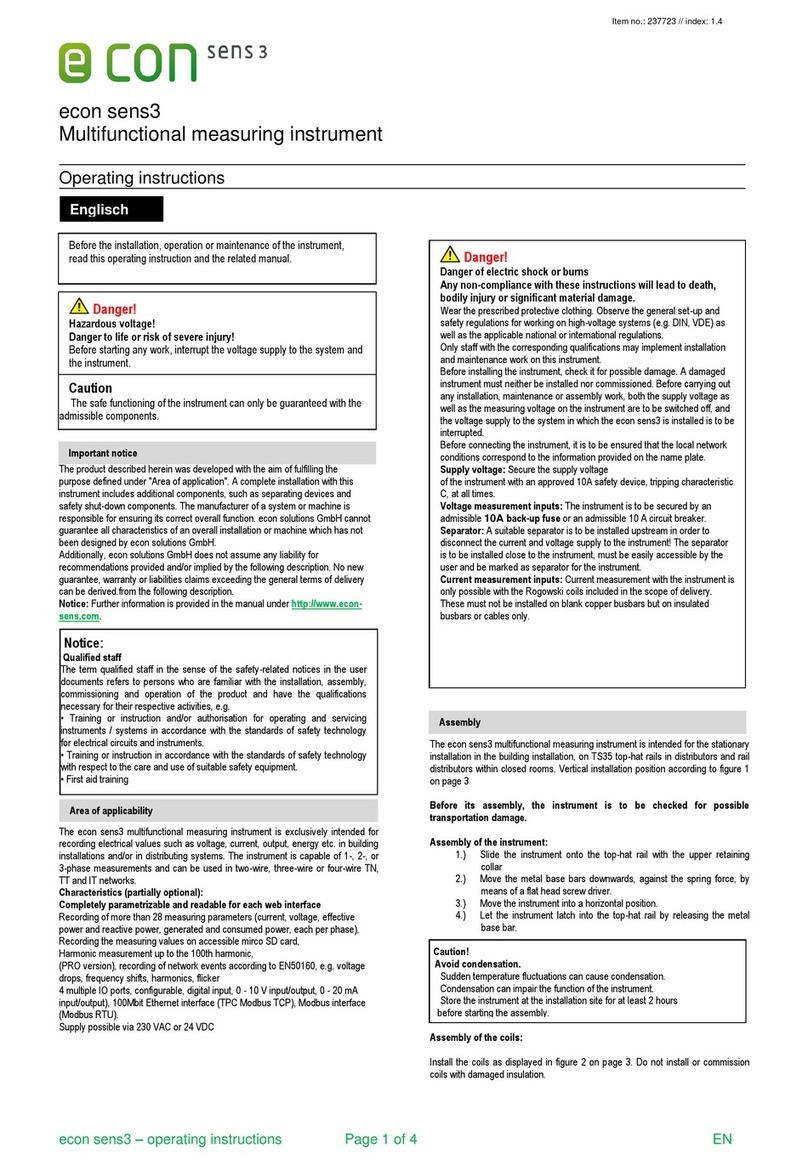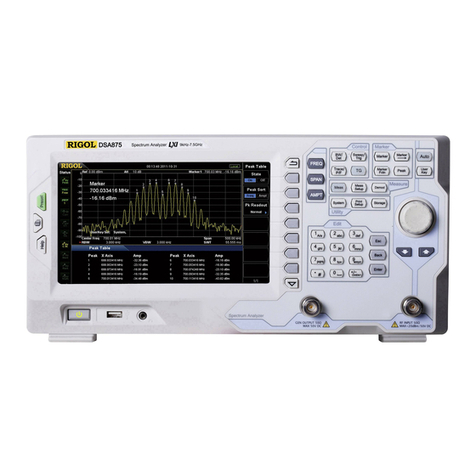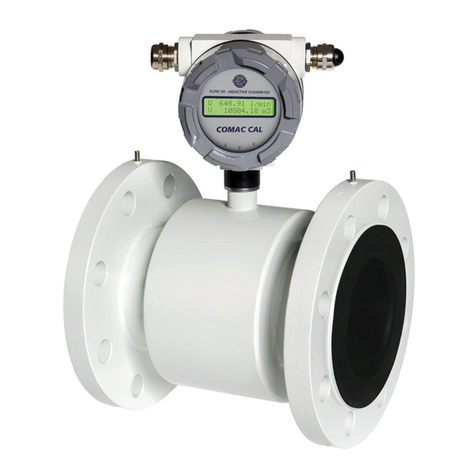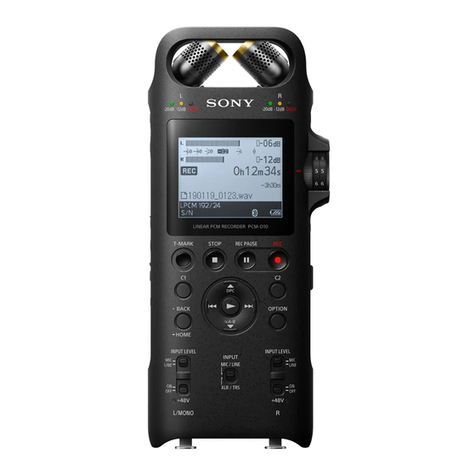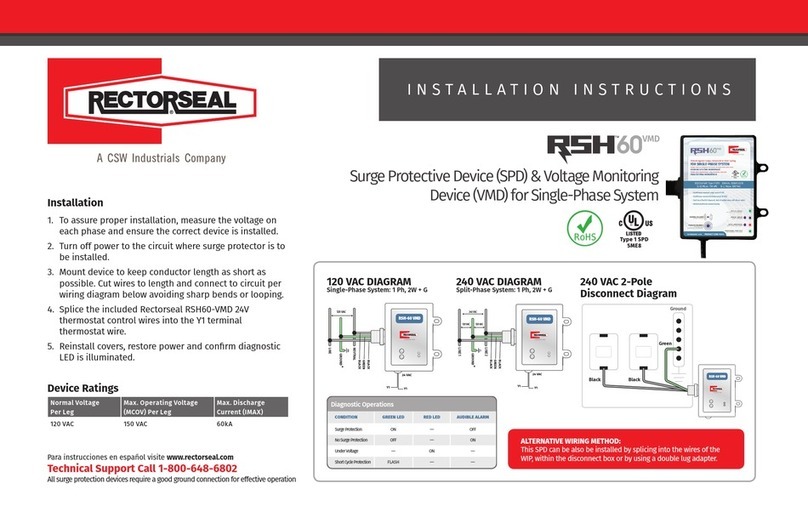biosystems EX CHEK User manual

0
Reference Manual
Ex Chek
NiMH Rechargeable Version
Combustible Gas Detector
651 South Main Street
Middletown, CT 06457
(800) 711-6776 (860) 344-1079
Fax (860) 344-1068
Part number 13-123 Version 2.2

1

1
EX CHEK PERSONAL PORTABLE GAS DETECTORS HAVE BEEN
DESIGNED FOR THE DETECTION AND MEASUREMENT OF
POTENTIALLY HAZARDOUS ATMOSPHERIC CONDITIONS
IN ORDER TO ASSURE THAT THE USER IS PROPERLY WARNED OF
POTENTIALLY DANGEROUS ATMOSPHERIC CONDITIONS, IT IS
ESSENTIAL THAT THE INSTRUCTIONS IN THIS REFERENCE MANUAL
BE READ, FULLY UNDERSTOOD, AND FOLLOWED.
AVERTISSEMENT: LIRE ATTENTIVEMENT LES INSTRUCTIONS AVANT DE
METTRE EN MARCHE.
Ex Chek
Reference Manual
NiMH Version
Biosystems Part Number 13-123
Version 2.2
Copyright 2002
by
Biosystems
Middletown, Connecticut 06457
All rights reserved.
No page or part of this operation manual may be reproduced in any form without written
permission of the copyright owner shown above.
Biosystems reserves the right to correct typographical errors.

2
Table of Contents
Certifications............................................................................................................................... 4
Signal Words............................................................................................................................... 4
Warnings ..................................................................................................................................... 5
Chapter 1.Ex Chek Description................................................................................................. 7
1.1 Ex Chek capabilities ......................................................................................................... 7
1.2 Methods of sampling......................................................................................................... 7
1.3 Combustible gas sensors ................................................................................................. 7
1.4 One Button Auto Calibration............................................................................................. 8
1.5 Display backlight .............................................................................................................. 8
1.6 Alarm logic........................................................................................................................ 8
1.6.1 Atmospheric hazard alarms ........................................................................................ 8
1.6.2 Low battery alarms ..................................................................................................... 9
1.7 Special microprocessor features ...................................................................................... 9
1.8 Classification for intrinsic safety ....................................................................................... 9
1.9 Options ............................................................................................................................. 9
1.9.1 Vibrator Alarm.............................................................................................................9
1.9.2 Remote sample draw kit ............................................................................................. 9
1.9.3 Weather cover .......................................................................................................... 10
1.10 Ex Chek design components .......................................................................................... 10
1.11 Ex Chek accessories ...................................................................................................... 10
Chapter 2. Basic operation .....................................................................................................11
2.1 Overview of Ex Chek operation ...................................................................................... 11
2.1.1 Operational warnings and cautions .......................................................................... 11
2.1.2 Turning the Ex Chek on............................................................................................ 12
2.1.3 Turning the Ex Chek off............................................................................................ 12
2.1.4 Start-up sequence .................................................................................................... 12
2.2 Operating modes ............................................................................................................ 12
2.2.1 Text Only mode ........................................................................................................ 12
2.2.2 Technician mode ...................................................................................................... 13
2.2.3 Changing operating modes....................................................................................... 13
2.3 Ex Chek NiMH battery .................................................................................................... 13
2.3.1 Low battery voltage alarms....................................................................................... 14
2.3.2 Battery charging procedure ...................................................................................... 14
2.4 Methods of sampling....................................................................................................... 14
2.4.1 Using the hand aspirated sample draw kit................................................................ 14
2.5 Combustible gas sensor ................................................................................................. 15
2.5.1 Detection of missing or damaged Ex Chek sensor ................................................... 15

3
Chapter 3.Calibration............................................................................................................... 15
3.1 Verification of accuracy .................................................................................................. 15
3.1.1 Effects of contaminants on combustible sensors...................................................... 16
3.2 Fresh air "zero" calibration ............................................................................................. 17
3.3 Functional (bump) test.................................................................................................... 17
3.4 Auto-calibration .............................................................................................................. 17
3.4.1 Fresh air "zero" auto-calibration sequence .............................................................. 18
3.4.2 “Span” calibration sequence..................................................................................... 18
3.5 Manual calibration procedure ......................................................................................... 19
3.5.1 Fresh air "zero" through keypad buttons .................................................................. 19
3.5.2 Span calibration using keypad buttons..................................................................... 20
Chapter 4.Alarm settings......................................................................................................... 22
4.1 Alarm adjustment sequence ........................................................................................... 22
4.2 “Alarm Latch” command.................................................................................................. 22
4.3 Restoring the factory default alarm settings ................................................................... 23
Chapter 5.Ex Chek Advanced Functions................................................................................ 24
5.1 Advanced features overview........................................................................................... 24
5.2 Re-setting the calibration gas concentration .................................................................. 24
5.3 Setting the security beep interval ................................................................................... 24
Chapter 6.Trouble Shooting and Repair ................................................................................ 25
6.1 Replacing Ex Chek sensor ............................................................................................. 25
6.2 Troubleshooting..............................................................................................................25
6.3 Specific problems ........................................................................................................... 26
6.3.1 Unit will not turn on................................................................................................... 26
6.3.2 Unit will not turn off................................................................................................... 26
6.3.3 Unstable sensor readings......................................................................................... 26
6.3.4 Blank display ............................................................................................................ 26
6.3.5 No audible alarm ...................................................................................................... 26
6.3.6 Keypad buttons (+,-, Cal, Alarm) don't work ............................................................. 26
6.3.7 Can’t make a “One Button” auto zero adjustment (“Too High” or “Too Low” for zero
adjust) 26
6.4 Returning your Ex Chek to Biosystems for service or repair .......................................... 27
Appendicies .............................................................................................................................. 28
Appendix A: How to calibrate your Ex Chek in contaminated air ............................................ 28
Appendix B: Biosystems Standard Warranty Gas Detection Products ................................... 29

4
Certifications
The Ex Chek is a personal, portable, microprocessor controlled, single sensor gas detector. The
Ex Chek is designed to detect combustible gas.
The Ex Chek is Classified by Underwriters Laboratories, Inc. as to Intrinsic Safety for use in
Hazardous Locations Class I, Division I, Groups A, B, C, and D, Class II Groups, E, F, & G, and the
Canadian Standards Association for use in Hazardous Locations Class l Division I Groups A, B, C,
and D. Classification for intrinsic safety is based on tests conducted in explosive gas / air (21 %
Oxygen) mixtures only.
European Community (DEMKO Certificate number 99E.9933271X), EEx ia IIC T4 for instruments
powered using DEMKO approved alkaline batteries.
The Ex Chek is also CE-Marked (Conformité Européenne). The UL, CSA, and DEMKO
classifications marks indicate compliance with United States, Canadian, and European
Community requirements.
Signal Words
The following signal words, as defined by ANSI Z535.4-1998, are used in the Ex Chek Reference
Manual.
indicates an imminently hazardous situation which, if not avoided, will result
in death or serious injury.
indicates a potentially hazardous situation which, if not avoided, could result
in death or serious injury.
indicates a potentially hazardous situation, which if not avoided, may result
in moderate or minor injury.
CAUTION used without the safety alert symbol indicates a potentially hazardous situation which, if
not avoided, may result in property damage.

5
Warnings
1. The Ex Chek personal, portable gas detector has been designed
for the detection of combustible gas accumulations. An alarm condition indicates the
presence of a potentially life-threatening hazard and should be taken very seriously.
2. In the event of an alarm condition it is important to follow
established procedures. The safest course of action is to immediately leave the
affected area, and to return only after further testing determines that the area is once
again safe for entry. Failure to immediately leave the area may result in serious injury
or death.
3. Use only (DEMKO approved) Duracell MN2400 or Eveready E92,
size AAA, 1.5V Alkaline Batteries. Substitution of batteries may impair intrinsic safety.
4. The accuracy of Ex Chek instruments should be checked
periodically with known concentration calibration gas. Failure to check accuracy can
lead to inaccurate and potentially dangerous readings.
5. A sensor that cannot be calibrated or is found to be out of
tolerance must be replaced immediately. An instrument that fails calibration may not
be used until testing with known concentration test gas determines that accuracy has
been restored, and the instrument is once again fit for use.
6. Do not reset the calibration gas concentration setpoints in the Ex
Chek unless the concentrations of your calibration gas differ from the concentrations
of the calibration gas that is normally supplied by Biosystems for use in calibrating
the Ex Chek.
7. Use of non-standard calibration gas and/or calibration kit
components when calibrating the Ex Chek can lead to dangerously inaccurate
readings and may void the standard Biosystems warranty.
Biosystems offers calibration kits and long-lasting cylinders of test gas specifically
developed for easy calibration. Customers are strongly urged to use only Biosystems
calibration materials when calibrating the Ex Chek.
8. Substitution of components may impair intrinsic safety.
9. For safety reasons the Ex Chek must be operated by qualified
personnel only. Read, understand and follow the directions set forth in this reference
manual before operating the Ex Chek.
10. The Ex Chek has been tested for intrinsic safety in Explosive
Gas/AIR(21.0% O2) Only.
AVERTISSEMENT: LA SUBSTITUTION DE COMPOSANTS PEUT COMPROMETTRE LA SÉCURITÉ
INTRINSÈQUE.
ATTENTION: POUR DES RAISONS DE SÉCURITÉ, CET ÉQUIPMENT DOIT ETRE UTILISÉ,
ENTRETENU ET RÉPARÉ UNIQUEMENT PAR UN PERSONNEL QUALIFIÉ. ÉTUDIER LE MANUEL
D'INSTRUCTIONS EN ENTIER AVANT D'UTILISER, 'ENTRETENIR OU DE RÉPARER L'ÉQUIPMENT.

6

7
Chapter 1. Ex Chek
Description
1.1 Ex Chek capabilities
The Ex Chek is a single sensor gas detector
designed to detect combustible gases and
vapors. The Ex Chek includes numerous
features designed to meet specific user
requirements. This chapter will broadly
discuss the use and capabilities of the Ex
Chek.
1.2 Methods of sampling
The Ex Chek may be used in either diffusion
or sample-draw mode. In either mode, the
gas sample must enter the sensor
compartment for the instrument to register a
gas reading.
In diffusion mode, the atmosphere reaches
the sensor by diffusing through the sensor
port on the front of the instrument. Normal
air movements are enough to carry the
sample to the sensor. The sensor reacts
quickly to changes in the concentration of
the gas being measured.
It is also possible to use the Ex Chek to
sample remote locations with the hand-
aspirated sample-draw kit that is available
separately. During remote sampling, the
gas sample is drawn into the sensor
compartment through the probe assembly
and a length of tubing.
Use of the sample draw kit is covered in
section 2.4.
1.3 Combustible gas sensors
As an environment becomes contaminated
with combustible gases or vapors,
concentrations can climb until they
eventually reach ignitable or explosive
levels. The minimum amount of a
combustible gas or vapor in air that will
explosively burn if a source of ignition is
present is known as the Lower Explosive
Limit (LEL) concentration. Ex Chek
combustible gas readings are given in
percent LEL, with a range of zero to one-
hundred percent explosive. The Ex Chek
combustible gas sensor is non-specific and
responds to all combustible gases and
vapors.
Combustible sensors contain two coils of
fine wire coated with a ceramic material to
form beads. These two beads are strung
onto the opposite arms of a balanced
Wheatstone Bridge circuit. The "active"
bead is additionally coated with a palladium
based material that allows catalyzed
combustion to occur on the surface of the
bead. The palladium catalyst is not
consumed in the combustion reaction, it
simply enables it to occur. It is not
necessary for the combustible vapor to be
present in LEL concentrations in order for
this reaction to occur. Even trace amounts
of combustible gas present in the air
surrounding the sensor will be catalytically
burned on the surface of the bead.
The "reference" bead lacks the palladium
outer coating but in other respects exactly
resembles the active bead. A voltage is
applied across the active and reference
elements, causing them to heat. If
combustible vapors are present, the active
bead will be heated by the reaction to a
higher temperature. The temperature of the
untreated reference bead is unaffected by
the presence of gas. The difference
between the temperatures of the two beads
will be proportional to the amount of
combustible gas present.
Since the two beads are strung on the
opposite arms of a Wheatstone Bridge
electrical circuit, the difference in
temperature between the beads is perceived
by the instrument as a change in electrical
resistance.
It is important to note that catalytic "hot
bead" type combustible sensors require the
presence of oxygen (at least 10 percent by
volume) in order to detect accurately. A

8
combustible sensor located in a 100 percent
pure combustible gas or vapor environment
containing no oxygen will be unable to burn
the combustible gas and will produce a
reading of zero percent LEL.
1.4 One Button Auto Calibration
The Ex Chek detector has been designed
for easy verification of accuracy.
Biosystems’ “One Button” calibration logic
means that all normal day-to-day operating
procedures, including automatic calibration
adjustment, may be undertaken through the
use of the single on/off MODE button.
The accuracy of Ex
Chek instruments should be checked
periodically with known concentration
calibration gas. Failure to check
accuracy can lead to inaccurate and
potentially dangerous readings.
Calibration is a two step procedure. In the
first step the Ex Chek is taken to an area
where the atmosphere is fresh and a "zero"
adjustment is made by pressing the on/off
MODE button. The second step of the
calibration procedure is the sensor response
or "span" adjustment. In this step the
sensor is exposed to known concentration
calibration gas. If the instrument recognizes
a deviation from the expected response, it
will automatically adjust itself so that the
readings match the concentration of the gas
being used.
Calibration procedures are discussed in
detail in Chapter 3.
1.5 Display backlight
A manually activated display backlight
allows the LCD to be read even in dim light
conditions. Pressing the on/off MODE
button once at any time during normal
operation causes the backlight to be
activated for 10 seconds. In the event of a
gas alarm the backlight turns on
automatically and remains on until the alarm
condition has cleared.
1.6 Alarm logic
Ex Chek alarms are user adjustable and
may be set anywhere within the range of the
sensor. When an alarm set point is
exceeded a two-toned audible alarm
sounds, a bright red LED alarm light flashes,
and (if equipped) the optional vibrator type
alarm is activated.
Ex Chek alarms are normally self-resetting.
When readings drop back below the pre-set
alarm levels, the instrument returns to
normal operation, and the visual and audible
alarms cease.
Ex Chek alarms can also be set to "latch"
during an alarm condition. In the “latched”
mode, once an alarm occurs both visual and
audible alarms continue to sound even after
the atmospheric hazard has cleared. The
alarms must then be manually reset by
pressing the MODE button.
Procedures for latching Ex Chek alarms
are given in section 4.2.
1.6.1 Atmospheric hazard alarms
The Ex Chek personal,
portable gas detector has been designed
for the detection of combustible gas
accumulations. An alarm condition
indicates the presence of a potentially
life-threatening hazard and should be
taken very seriously.
In the event of an alarm
condition it is important to follow
established procedures. The safest
course of action is to immediately leave
the affected area, and to return only after
further testing determines that the area is
once again safe for entry. Failure to
immediately leave the area may result in
serious injury or death.

9
The ceiling alarm set point provided for Ex
Chek detectors are set conservatively at the
factory to maximize worker safety.
The procedures for adjusting alarm set
points or restoring the factory default
settings are given in section 4.1.
1.6.2 Low battery alarms
The rechargeable version of the EX Chek is
equipped with a sealed rechargeable NiMH
(nickel metal hydride) battery that is
designed to provide up to 6 hours of
continuous use.
When it is time to replace the batteries a "B"
will appear in the lower left hand corner of
the display screen, and the audible alarm
will “beep” once per minute until the battery
is replaced. Once the batteries are no
longer able to provide adequate power to
the instrument an audible chirping alarm will
sound for 20 seconds and the display will
toggle:
D E A D
↑↓
B A T T
After 20 seconds, the instrument will shut
itself off. The battery should be recharged
as soon as possible after any low battery
message is displayed.
Section 2.3.1 below covers battery
charging procedures.
1.7 Special microprocessor
features
Several automatic programs prevent
tampering and misuse of the Ex Chek by
unauthorized persons. Each time the
detector is turned on, an electronic self-test
is performed that assures the user of proper
performance. The sensor, LED alarm light,
and audible alarm are automatically
evaluated, and the battery is monitored
continuously for proper voltage.
The Ex Chek offers the following additional
options that allow the user to customize the
instrument for his/her own use.:
•security beep
•latching alarms
•calibration gas concentration settings
•alarm settings
Chapter 5 describes how to use these
advanced technical features and setup
choices in greater detail.
1.8 Classification for intrinsic
safety
The Ex Chek is Classified by Underwriters
Laboratories, Inc., as to Intrinsic Safety for
use in Hazardous Locations Class I,
Division I, Groups A, B, C, & D. and Class II
Groups E, F, & G, the Canadian Standards
Association for use in Class l, Groups A, B,
C, and D, and the European Community
(DEMKO Certificate number
99E.9933271X), EEx ia IIC T4 for
instruments powered using DEMKO
approved alkaline batteries.
Classification for intrinsic safety is based
on tests conducted in explosive gas / air
(21 % Oxygen) mixtures only.
1.9 Options
1.9.1 Vibrator Alarm
An optional internally mounted vibrator type
alarm is available for use in high noise or
other environments requiring additional
warnings. The vibrator alarm option must
be specified at the time the instrument is
purchased.
1.9.2 Remote sample draw kit
An optional hand aspirated (squeeze bulb)
sample draw kit is available for use in
situations where the sample must be
obtained from locations that are remote from
the instrument. The sample draw kit
consists of a sample draw adapter, squeeze

10
bulb, sample probe assembly, spare filters,
and 10 feet of sample tubing.
1.9.3 Weather cover
An optional leather weather cover is
available for use in environmentally harsh
locations, or where additional protection is
desired.
1.10 Ex Chek design components
(1) Case: The instrument is enclosed in a
durable, gasketed case constructed of a
metal plated ABS / polycarbonate
material.
(2) LCD display: A top mounted liquid
crystal display (LCD) displays readings,
messages, and other information. A
manually activated backlight ensures
that the LCD may be easily read even in
dim light conditions.
(3) Alarm light: A bright red top-mounted
LED (light emitting diode) alarm light
visually warns users when an alarm level
is exceeded.
(4) Audible alarm: A loud two-toned audible
alarm is provided to warn users of
hazardous conditions.
(5) MODE button: The on/off "Mode" button
is used to turn the instrument on and off
as well as control most other functions.
(6) Protective cap: An o-ring sealed cap
and moisture barrier filter protect the
sensor from damage.
(7) Sensor: The top-mounted sensor may
be easily accessed for replacement or
repair.
(8) Bottom surface: The stainless steel belt
clip may be removed to allow access to
the 4 hidden push-buttons ("Cal,"
"Alarm," "+," and "-") used to control
advanced functions.
Bright LED alarm
light
One button controls all normal
day-to-day operations
including Auto Calibration
adjustment
Accurate
electrochemical
sensor
Easy to read LCD
display with backlight
Loud two-tone
audible alarm
Optional built-in
vibrator alarm for
high noise
environments
Figure 1.3: Ex Chek external features
Belt clip
Battery
compartment
cover
Figure 1.4: Ex Chek bottom surface
1.11 Ex Chek accessories
Ex Chek detectors are shipped complete
with sensor, set of three AAA alkaline
batteries (installed), calibration adapter,
owner’s manual and quick reference card.
Optional Ex Chek accessories include
sample draw kit, weather cover and
internally mounted vibrator alarm (vibrator
option must be specified at time of
purchase).

11
Chapter 2. Basic operation
2.1 Overview of Ex Chek
operation
The Ex Chek offers a choice of two modes
of operation, "Text Only," and "Technician".
Mode selection should be based on how
much information is required, the skill level
of the user, and the nature of the job.
2.1.1 Operational warnings and
cautions
1. The Ex Chek
personal, portable gas detector has
been designed for the detection of
combustible gas accumulations. An
alarm condition indicates the
presence of a potentially life-
threatening hazard and should be
taken very seriously.
2. In the event of an
alarm condition it is important to
follow established procedures. The
safest course of action is to
immediately leave the affected area,
and to return only after further testing
determines that the area is once again
safe for entry. Failure to immediately
leave the area may result in serious
injury or death.
3. Use only (DEMKO
approved) Duracell MN2400 or
Eveready E92, size AAA, 1.5V Alkaline
Batteries. Substitution of batteries
may impair intrinsic safety.
4. The accuracy of Ex
Chek instruments should be checked
periodically with known concentration
calibration gas. Failure to check
accuracy can lead to inaccurate and
potentially dangerous readings.
5. A sensor that
cannot be calibrated or is found to be
out of tolerance must be replaced
immediately. An instrument that fails
calibration may not be used until
testing with known concentration test
gas determines that accuracy has
been restored, and the instrument is
once again fit for use.
6. Do not reset the
calibration gas concentration
setpoints in the Ex Chek unless the
concentrations of your calibration gas
differ from the concentrations of the
calibration gas that is normally
supplied by Biosystems for use in
calibrating the Ex Chek.
7. Use of non-
standard calibration gas and/or
calibration kit components when
calibrating the Ex Chek can lead to
dangerously inaccurate readings and
may void the standard Biosystems
warranty.
Biosystems offers calibration kits and
long-lasting cylinders of test gas
specifically developed for easy
calibration. Customers are strongly
urged to use only Biosystems
calibration materials when calibrating
the Ex Chek.
8. Substitution of
components may impair intrinsic
safety.
9. For safety reasons
the Ex Chek must be operated by
qualified personnel only. Read,
understand and follow the directions
set forth in this reference manual
before operating the Ex Chek.
10. The Ex Chek has
been tested for intrinsic safety in
Explosive Gas/AIR(21.0% O2) Only.

12
2.1.2 Turning the Ex Chek on
The black switch on the front of the Ex Chek
is called the "MODE" button and is used to
turn the Ex Chek on and off, and to control
routine instrument operations. Press and
hold the MODE button for one second to
turn the Ex Chek on.
2.1.3 Turning the Ex Chek off
To turn the Ex Chek off press and hold the
MODE button down for 3 seconds.
2.1.4 Start-up sequence
After the detector has been turned on, it will
automatically go through an electronic self
test and start up sequence that takes
approximately twenty seconds.
During the self test sequence the LCD
backlight will be activated, the visual LED
alarm light will flash and the audible alarm
will sound. If the instrument is equipped
with the optional vibrator alarm it will briefly
activate. During start-up the LCD display
will also show several messages or
"screens" in sequence.
The first screen displays the software
version number:
CP 1.2
Note: The software version installed may
differ from that shown above.
The second shows the type of sensor
installed:
E X
Additional screens will briefly appear
indicating the current peak alarm set point.
If the Ex Chek is operating in the
Technician mode, it will display the
following factory installed (default) alarm set
point.
P E A K
↓
A L R M
↓
1 0
This screen is followed by the current gas
readings screen for the gas being
measured, which alternates with a screen
that identifies the type of gas being
measured:
E X
↑↓
0
Note: The alarm set-point screens are
omitted when the instrument is turned on
while in the "Text Only" mode.
2.2 Operating modes
The Ex Chek has two operating modes.
Operating mode selection determines the
amount of information that will be displayed
during routine operation.
2.2.1 Text Only mode
The simplest mode of operation is the "Text
Only" mode. In this mode, during normal
operation the LCD screen does not display
numerical readings, only the indication
"OK". This screen alternates with a screen
that identifies the type of gas being
measured:
E X
↑↓
O K
An alarm condition occurs when the sensor
readings exceed the pre-set alarm level.
During an alarm the indication changes from
"OK" to the numerical value, the LED alarm
light flashes, the audible alarm sounds, and
(if equipped) the optional vibrator alarm is
activated.
E X
↑↓
1 8
Ex Chek alarms are normally self-resetting.
When readings drop back below the pre-set

13
alarm levels, the screen reverts back to the
"OK" indication and visual and audible
alarms cease.
2.2.2 Technician mode
The "Technician" mode of operation gives
the user access to the numerical current gas
readings screen regardless of alarm state
and also gives access to the peak readings
screen.
E X
↑↓
0
An alarm condition occurs when the sensor
readings exceed the pre-set alarm level.
During an alarm the numerical readings will
indicate the current gas reading in terms of
percentage of LEL, the LED alarm light
flashes, the audible alarm sounds, and (if
equipped) the optional vibrator alarm is
activated.
E X
↑↓
1 8
Ex Chek alarms are normally self-resetting.
When readings drop back below the pre-set
alarm levels, visual and audible alarms
cease, and normal operation of the
instrument resumes.
Pressing the MODE button in "Technician"
mode allows the user to toggle between the
peak readings screen and the current gas
reading screen.
The first screen is the gas level display
discussed above. Pressing the MODE
button once displays the peak reading of the
gas being measured since the instrument
was switched on.
E X
↑↓
2 0
Pressing the MODE button again returns the
display to the first screen showing current
gas levels.
Regardless of mode selection, anytime the
Ex Chek is in use it remembers the peak
readings of the gas being measured and will
go into alarm whenever appropriate.
2.2.3 Changing operating modes
It is possible to shift from one operating
mode to another while the instrument is in
use without turning the instrument off or
resetting the peak alarms. Simply remove
the belt clip on the bottom of the instrument
to expose the four mini-push-buttons, and
simultaneously press and hold the "+" and "-
" buttons until the word “MODE” is
displayed. Each time the operating mode is
changed the display screen will briefly
indicate the operating mode that has been
selected.
Note: Shifting modes or otherwise
reprogramming the instrument should
only be done by employees who are
authorized to do so.
Figure 2.2. Ex Chek with belt clip
removed exposing the four keypad
pushbuttons
2.3 Ex Chek NiMH battery
Ex Chek detectors equipped with the
rechargeable NiMH (nickel metal hydride)

14
battery are designed to provide up to 6
hours of continuous use. The NiMH battery
is sealed in the Ex Chek and should not be
disassembled in the field.
2.3.1 Low battery voltage alarms
When it is time to recharge the batteries a
"B" will appear in the lower left hand corner
of the display screen, and the audible alarm
will “beep” once per minute until the
batteries are replaced. Once the “B” is
displayed, the user should have
approximately 10 minutes of useful battery
life remaining.
2.3.2 Battery charging procedure
The Ex Chek must be
located in a non-hazardous location
during the charging cycle. Charging the
Ex Chek in a hazardous location may
impair intrinsic safety.
(1) Check that the instrument is turned off.
(If it is not, press the mode button until
the message "Release button".)
(2) Connect the charger cradle to the 110
VAC “wall cube” power source.
(3) Plug the “wall cube” in and check to see
that the “PWR” (power-on) indicator LED
on the charger cradle is lit.
(4) Slip the Ex Chek into the charger cradle
and check to see that the “FAST” (fast
charger) indicator LED on the charger
cradle is lit.
Note: The “FAST” indicator will
initially light up and remain lit for the
first 15 minutes no matter what the
battery pack voltage.
(5) When charging is complete the “FAST”
indicator will turn off. Charging is
complete any time after the “TRIC”
(trickle charge) indicator is lit.
Accuracy of the Ex Chek detector must
be verified by exposure to known
concentration test gas before the
instrument is put back into service.
CAUTION To achieve optimal charge and
ensure long battery life of the NIMH
battery, make sure that charging takes
place in an area where the ambient air
temperature is between 40 and 86
degrees Fahrenheit (5 and 30 degrees
Celsius). Charging the battery in
temperatures above or below this range
can damage the battery and will
drastically affect battery life.
2.4 Methods of sampling
The Ex Chek may be used in either diffusion
or sample-draw mode. In either mode, the
gas sample must enter the sensor
compartment for the instrument to register a
gas reading.
In diffusion mode, the atmosphere reaches
the sensor by diffusing through the sensor
port on the front of the instrument. Normal
air movements are enough to carry the
sample to the sensor. The sensor reacts
quickly to changes in the concentration of
the gas being measured.
It is also possible to use the Ex Chek to
sample remote locations with the hand-
aspirated sample-draw kit that is available
separately. During remote sampling, the
gas sample is drawn into the sensor
compartment through the probe assembly
and a length of tubing.
2.4.1 Using the hand aspirated
sample draw kit
(1) Connect the slip-on sample draw cup
with the squeeze bulb and hose
assembly. (Connect the end of the short
length of hose closest to the bulb to the
sample draw cup. Connect the other end
of the hose to the sample probe.)
(2) Cover the end of the sample draw probe
assembly with a finger, and squeeze the
aspirator bulb. If there are no leaks in
the sample draw kit components, the
bulb should stay deflated for a few
seconds.

15
(3) Insert the end of the sample probe into
the location to be sampled.
(4) Squeeze the aspirator bulb several times
to draw air from the remote location to
the sensor compartment. Allow one
squeeze of the bulb for every one foot of
sampling hose for the sample to begin
reaching the sensor compartment. Once
the sample has reached the sensor,
continue to squeeze the bulb at a rate of
once per second for another full minute
until readings stabilize.
Caution: Hand aspirated remote
sampling only provides continuous gas
readings as long as the bulb is being
squeezed.
2.5 Combustible gas sensor
The Ex Chek contains a single combustible
gas sensor.
It is important to note that catalytic "hot
bead" type combustible sensors require the
presence of oxygen (at least 10 percent by
volume) in order to detect accurately. A
combustible sensor located in a 100 percent
pure combustible gas or vapor environment
containing no oxygen will be unable to burn
the combustible gas and will produce a
reading of zero percent LEL.
For a detailed discussion of the theory
behind the Ex Chek combustible sensor,
see section 1.3 above.
2.5.1 Detection of missing or
damaged Ex Chek sensor
If the Ex Chek sensor has been
inadvertently removed or has sustained
internal damage the Ex Chek will sound an
audible alarm and flash the visible alarm
LED while displaying “F L T” on the LCD
display. The Ex Chek will stay in alarm
mode until the unit is shut off and an
operational sensor is installed.
Chapter 3. Calibration
The Ex Chek detector has been designed
for easy calibration. The on / off “MODE”
button is used to enter “Auto-Calibration”
mode, and to automatically make all
calibration adjustments.
It is also possible to manually calibrate the
instrument by using simple push-button
controls located on the instrument keypad.
“One-Button Auto-Cal” procedures are
discussed in Section 3.4. Manual
calibration procedures are discussed in
Section 3.5.
3.1 Verification of accuracy
The accuracy of Ex
Chek instruments should be checked
periodically with known concentration
calibration gas. Failure to check
accuracy can lead to inaccurate and
potentially dangerous readings.
Verification of accuracy is a two step
procedure. In the first step the Ex Chek is
taken to an area where the atmosphere is
fresh and the readings are checked. If the
readings differ from those expected in fresh
air a "zero" adjustment must be made. The
second step is to make sure the sensor is
accurate by exposing it to known
concentration test gas and noting the
response. LEL readings are considered
accurate when they are within ±10% of the
expected concentration as given on the
calibration gas cylinder. If readings are
accurate, there is no need to adjust your gas
detector. If the readings are inaccurate, the
instrument must be span calibrated before
further use.
Always check the
expiration date on calibration gas
cylinder(s) prior to use. Expired
calibration gas can lead to inaccurate
and potentially dangerous readings.

16
Biosystems offers calibration kits and long
lasting cylinders of test gas specifically
developed for easy Ex Chek calibration.
Customers are urged to use Biosystems
calibration materials when calibrating the Ex
Chek.
Use of non-standard
calibration gas and/or calibration kit
components when calibrating the Ex
Chek can lead to dangerously inaccurate
readings and may void the standard
Biosystems warranty.
3.1.1 Effects of contaminants on
combustible sensors
Combustible sensors may be affected by
exposure to substances containing silicone
(found in many lubricants and hydraulic
fluids), the tetra-ethyl-lead in "leaded"
gasoline, and halogenated hydrocarbons
(Freons, or solvents such as
trichloroethylene and methylene chloride).
High concentrations of hydrogen sulfide may
also damage the sensor.
Note: If sensitivity of the combustible
sensor is lost due to poisoning, it tends
to be lost first with regards to methane.
A partially poisoned sensor might still
respond accurately to propane while
showing a dangerously reduced response to
methane.
Biosystems’ “Propane Equivalent”
calibration gas mixtures have been
developed to eliminate this potentially
dangerous source of calibration error.
Because Biosystems’ “Propane Equivalent”
mixtures are based on methane, any loss of
sensitivity to methane is detected (and can
be corrected) immediately.
Using Biosystems brand calibration gas
and verifying accuracy before each day’s
use insures that proper sensitivity is
maintained over the life of the sensor.
3.1.1.1 Effects of high concentrations
of combustible gas on the combustible
sensor
The accuracy of combustible sensors may
also be affected by exposure to high
concentrations of combustible gas. To
minimize the chance for damage or loss of
sensitivity to the combustible sensor, the Ex
Chek is designed to "alarm latch" whenever
the concentration of combustible gas
exceeds 100 percent LEL. Under these
conditions the combustible gas reading will
show “F L T” to indicate an over-limit
condition. The audible and visual alarms will
sound continuously until the instrument is
manually reset by turning it off, then turning
the instrument back on in an area where the
air is known to be fresh.
Make sure that the Ex
Chek is located in fresh air before turning
the instrument back on after a
combustible sensor alarm latch condition
has occurred. Fresh air calibration
adjustments may only be made when the
Ex Chek is located in air that is known to
be fresh. After a combustible sensor
alarm-latch condition occurs, the
accuracy of the combustible gas sensor
must be verified by exposure to known
percentage LEL concentration test gas
before further use.
The combustible
sensor used in the Ex Chek requires a
minimum of 10% oxygen by volume in
order to generate accurate combustible
gas readings. Combustible sensor
accuracy may be diminished if the
instrument is used in oxygen-deficient
atmospheres.
A rapid up-scale
reading followed by a declining or erratic
reading may indicate a hazardous
combustible gas concentration that
exceeds the Ex Chek’s zero to 100
percent LEL detection range. Failure to

17
leave the area immediately may result in
serious injury or death!
Avertissement: Toute lecture rapide et
positive, suivie d'une baisse subite au
erratique de la valeur, peut indiquer une
concentration de gaz hors gamme de
détection qui peut être dangereuse.
3.2 Fresh air "zero" calibration
The fresh air "zero" must be done in fresh,
uncontaminated air. In this procedure the
instrument automatically adjusts its readings
to match the concentrations present in fresh
air. Fresh air should contain 20.9% oxygen,
no combustible gases or vapors and no toxic
gases.
If the Ex Chek cannot be taken to an area
where the air is fresh, or if it is not certain
whether or not the air is uncontaminated,
special procedures are required.
Appendix A discusses calibration options
in contaminated air.
The second step is to verify the accuracy of
the sensor by exposing it to known
concentration test gas.
3.3 Functional (bump) test
A simple functional (bump) test is all that is
needed to verify accuracy.
To perform a functional (bump) test, turn the
Ex Chek on, and wait at least three minutes
to allow the readings to fully stabilize. Make
sure the instrument is located in fresh air.
Check to see that the readings match the
concentrations present in fresh air. If the Ex
Chek is operated in the Technician mode
readings should equal 0% LEL. If the
instrument is operated in the Text Only
mode all readings should indicate conditions
are “OK”. If necessary, fresh air zero the
instrument using the procedures discussed
in Section 3.4.1.
Slip on the calibration adapter as discussed
in Section 3.4.2, and flow calibration gas to
the sensor. Wait for the readings to
stabilize. (Forty-five seconds to one minute
is usually sufficient.) Note the readings.
LEL readings are considered accurate when
they are within ±10% of the expected
concentration as given on the calibration
gas cylinder. If readings are accurate, there
is no need to adjust your gas detector. If the
readings are inaccurate, the instrument must
be span calibrated before further use.
Note: It is necessary to be in the
Technician operating mode in order to
make calibration adjustments. When the
instrument is operated in the Text Only
“OK” mode a functional (bump) test is
the procedure used to verify accuracy. If
the readings are accurate, it is safe to
use the instrument without further
adjustment.
3.4 Auto-calibration
Biosystems “One-Button Auto-Calibration”
mode may be used to verify accuracy any
time during normal operation while the
instrument is being used in the Technician
operating mode.
Press the on / off MODE button 3 times in
rapid succession to enter the “Auto-
Calibration” mode.
Auto-calibration is a two step procedure. In
the first step the Ex Chek is taken to an area
where the atmosphere is fresh and a "zero"
adjustment is made automatically by
pressing the on / off MODE button. The
second step is the sensor response or
"span" calibration adjustment. In this step
the accuracy of the Ex Chek sensor is
established by exposing it to known
concentration calibration gas. Once again,
the sensitivity or “span” is automatically
adjusted by pressing the on / off MODE
button.

18
3.4.1 Fresh air "zero" auto-calibration
sequence
The fresh air zero procedure may only be
done while the instrument is being operated
in the Technician operating mode.
(1) Turn the instrument on and make sure
gas readings are given in numbers.
If readings are given in the form of “OK”
text messages the instrument is currently
being operated in the “Text Only” mode.
It will be necessary to change to the
Technician operating mode. Switch
modes (if necessary) by simultaneously
holding down the "+" and"-" key as
discussed in section 2.2.3. Each time
the operating mode is changed, the LCD
screen will briefly indicate the current
operating mode.
(2) Wait at least three minutes after turning
the instrument on to allow sensor
readings to stabilize fully before initiating
auto-calibration procedures.
(3) Make sure the instrument is located in an
area where the air is known to be fresh.
(4) Press the MODE button 3 times within
two seconds. This will "wake up" the
instrument from normal operation, and
put it into the “Auto-Calibration” mode.
A screen will briefly display the message
“ZERO MODE”.
Z E R O
↑↓
M O D E
(5) Pressing the MODE button within five
seconds causes the fresh air adjustment
to be made. (If the MODE button is not
pushed within 5 seconds, the instrument
will return to normal operation.)
The screen will show the message
“WAIT ZERO” while the adjustment is
being completed.
W A I T
↑↓
Z E R O
(6) After successful completion of the “zero”
calibration, the display will prompt you
with the message “SPAN MODE” to
continue with a span calibration
adjustment.
3.4.1.1 Reading “Too High” or “Too
Low” for zero adjust
To reduce the chances of the Ex Chek being
inadvertently zeroed in contaminated air,
only small adjustments are allowed through
the use of the “One Button” auto-zero
sequence. If the necessary adjustments are
too large the display will indicate that the
reading is too low or too high for zero
adjustment. In this case the instrument must
be fresh air zeroed using the “Cal” button on
the instrument keypad and procedures
discussed in Section 3.5.1 of this manual.
Once the instrument has been successfully
zeroed using the “Cal” button, subsequent
calibration adjustments may be made using
the MODE button and “One Button Auto Cal”
logic discussed in this section.
3.4.2 “Span” calibration sequence
After successful completion of the “zero”
auto-calibration adjustment the display will
show the message “SPAN MODE”.
S P A N
↑↓
M O D E
If the MODE button is not pushed within five
seconds a span calibration adjustment will
not be made, and the instrument will be
returned to normal operation.
(1) Press the MODE button within 5 seconds
to initiate “span” auto-calibration. A
screen will ask you to “FLOW GAS”.
The instrument will continue to display
this screen until it determines that
calibration gas has been applied.
This manual suits for next models
1
Table of contents
Other biosystems Measuring Instrument manuals
